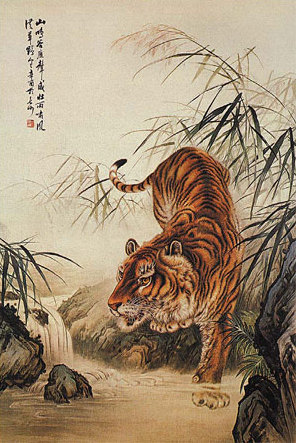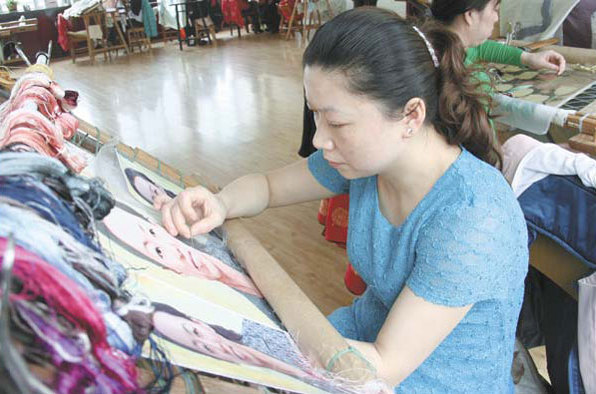 |
|
Incorporating such elements as Chinese painting and calligraphy, Xiangxiu embroidery has kept pace with modern fashions.
|
Developing with times
Among these traditional textile crafts in Hunan, the most renowned form is called Xiangxiu, or Hunan embroidery, one of China's four major embroidery forms. An art belonging to the Han people, it is perhaps the one that best follows the time and caters to market demands.
The art form comes from daily life and changes with the times, enabling Xiangxiu embroidery to survive and develop in the modern era, experts say.
The Shaping township in the suburbs of Changsha, Hunan's capital, is the cradle of Xiangxiu.
Embroidery is so popular there that locals say "every family has an embroider, and every village has an expert."
However, contemporary Xiangxiu has taken on some modern elements and become more fashionable and vivid.
In the past, the Xiangxiu used threads instead of pens to record history. Today, on the basis of traditional skills, the embroidery incorporates skills from traditional Chinese painting and calligraphy.
Besides, the embroidery is better mounted and packaged to cater to market demands.
Compared to Shaping township, traditions are better preserved in the Miao and Tujia villages in the mountainous areas of western Hunan because these places are relatively more isolated from modern civilization.
Some elderly people still use bed covers made of traditionally tie-dyed fabrics. Old wedding and festival customs related to traditional embroidery are also kept.
However, since the traditional techniques require a very comprehensive set of skills that not many people master, just a few are preserved till now.
Now governments at all levels have realized the cultural importance of the traditional craft and are already working toward its preservation.
 |
|
Xiangxiu embroidery master Yuan Xiaoqin works on a piece of work featuring portraits. Photos provided to China Daily
|
Several textile arts have been listed among the country's intangible cultural heritages.
In 2006, Xiangxiu embroidery, Huayao cross-stitch embroidery and Tujia brocade entered the country's first State-level list of intangible cultural heritage.
In 2008, the Dong brocade, the Miao cross-stitch embroidery and the Miao embroidery were placed on the second State-level intangible cultural heritage list.
Besides embroideries, some local traditional clothing has become intangible cultural treasures, too. One of them is the Miao dress and personal adornment, which are known for their variable kinds and styles as well as delicate craftsmanship.
Despite protection, some techniques, especially embroidery, are still faced with extinction, said Xiao Lingzhi, deputy chief of Hunan's provincial department of culture.
"Now fewer and fewer young people are willing to learn traditional skills and techniques," Xiao said.
Xiao called on the young people to learn traditional folk techniques and pass down these cultural heritages to more generations in the future.
The inland province of Hunan is home to a number of ethnic groups, who have together created 99 State-level and 220 provincial-level intangible cultural heritage items, according to the provincial cultural department.
Lu Yi contributed to the story
We recommend:
